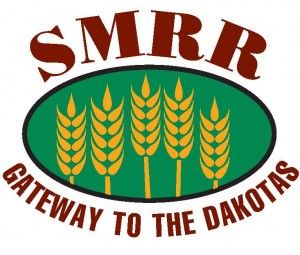
Small-Road Briefs: Boise Cascade/Palmetto Railways, Sisseton-Millbank Railroad (UPDATED)
Written by Carolina Worrell, Senior Editor
Map of TC&W Railroad, which owns and operates the 37-mile Sisseton-Millbank Railroad in South Dakota.
Boise Cascade Company (Boise Cascade) expands South Carolina footprint with new Colleton County facility, increasing the company’s distribution capacity with direct access to the Palmetto Railways Salkehatchie Subdivision rail line. Also, Governor Kristi Noem proposes $6.25 million to fund the repair of South Dakota’s Sisseton-Millbank Railroad.
Boise Cascade/Palmetto Railways
Building materials manufacturer and distributor Boise Cascade announced Dec. 12 plans to expand its South Carolina operations with a new $9 million facility in Colleton County that will create 30 new jobs and increase the company’s distribution capacity with direct access to the Palmetto Railways Subdivision rail line, connecting Boise Cascade to the national freight rail network.
The Fortune 500 company, whose existing South Carolina facility is located in Chester, S.C., serves residential and industrial construction retail yards, manufacturing wood products and distributing wholesale building materials across North America with more than 55 locations and 6,800 employees nationwide. The Colleton County facility, which will be located at 157 Risher Mountain Tower Road in Walterboro and marks Boise Cascade’s first distribution location and second South Carolina facility, will expand the company’s footprint in South Carolina and on the East Coast and better help serve customers in Myrtle Beach, Charleston, and Columbia, S.C., as well as Savannah, Ga., the Boise, Idaho-based company said.
According to Boise Cascade, the South Carolina Coordinating Council for Economic Development approved job development credits related to this project. A $200,000 Rural Infrastructure Fund (RIF) grant was also awarded to Colleton County to assist with the costs of site preparation and infrastructure improvements.

“We are excited to be planning a branch location in Colleton County,” said Boise Cascade Building Materials Division Executive Vice President Jeff Strom. “This investment demonstrates our commitment to a terrific customer base in a growing market.”
“Palmetto Railways appreciates the opportunity to collaborate with Boise Cascade, Colleton County and Southern Carolina Alliance to fulfill the rail infrastructure and logistics needs of another South Carolina business,” said Palmetto Railways President and CEO Patrick McCrory. “We look forward to seeing the continued success and service of the Salkehatchie Subdivision line, a testament to the power of rail connections within South Carolina communities.”
Additionally, Boise Cascade closed on the purchase of a 34-acre land parcel in Hondo, Tex., to build another distribution center. Located approximately 40 miles west of San Antonio, this property will be the company’s third distribution center in the state, along with its two-door shops in Houston and Dallas. The property, Boise Cascade says, is rail-served and will help customers in Austin, San Antonio, Corpus Christi and the Rio Grande Valley.
“We are very excited to expand our footprint into these markets,” said Boise Cascade Vice President of Operations Jim Wickham. “This will help us grow in these geographies and also provide deeper penetration in the local market for the facilities that are currently serving these areas, allowing us to be closer to our customers.”
Sisseton-Millbank Railroad
According to a Mitchell Republic report, Gov. Kristi Noem has proposed $6.25 million to fund South Dakota’s share of replacing Sisseton-Millbank Railroad’s 37 miles of track and upgrading the railroad to modern standards.

Currently, according to the Mitchell Republic report, the track—some of which was built in the 1880s—is unable to support the weight of modern railroad cars, disqualifying it from doing business with newer rail-served firms, and averages about one derailment per year. The rail line, which is a subsidiary of the Twin Cities & Western (TC&W) Railroad, mainly carries grain southeast from the elevator in Sisseton—in the Sisseton-Wahpeton Oyate Lake Traverse Reservation—to Millbank, where it then takes a short trip on a BNSF line to connect with the TC&W Railroad toward Minneapolis-St. Paul. Agricultural products loaded on the 37-mile northeastern South Dakota corridor move between three and five miles per hour, taking approximately eight hours to complete a one-way trip.
“The business is not sustainable at that pace,” says Mark Wegner, President of TC&W Railroad in Minnesota, which bought the Sisseton-Milbank Railroad just over a decade ago.
Assuming the state funding is matched with some $24 million in a grant funding request pending approval from the federal government, Wegner says “a revitalization of the railroad would help stir economic development in a rural corner of the state that lads in indicators like personal income and population growth,” according to the Mitchell Republic report.
According to the Mitchell Republic report, “the project would use one-time state funds from the 2023 fiscal year surplus; if Legislature approves this emergency spending, the funds would be available as soon as a decision from the federal government arrives, which is expected during the spring or early summer of 2023.”
According to the grant proposal submitted to the federal government by the South Dakota Department of Transportation on behalf of the Sisseton-Millbank Railroad, and as reported by the Mitchell Republic, without any repairs, the line “will likely continue to move similar volumes as it is now until such time as the rail line goes out of service.”
Were that to happen, the Mitchell Republic reports, “the onus would fall on the Sisseton elevator or local farmers to truck their products to elevators in Minnesota, further increasing freight costs and lowering farmer income.”
“However, assuming the upgrades are complete and rail service is improved to modern standards and a speed of 25 miles per hour, the local economy could be poised for a boom,” according to the Mitchell Republic report.
According to the Mitchell Republic report, the project has an expected completion date of 2025 but “a speedy approval process and environmental study phase could mean a finished project in time for the 2024 harvest,” Wegner said.



